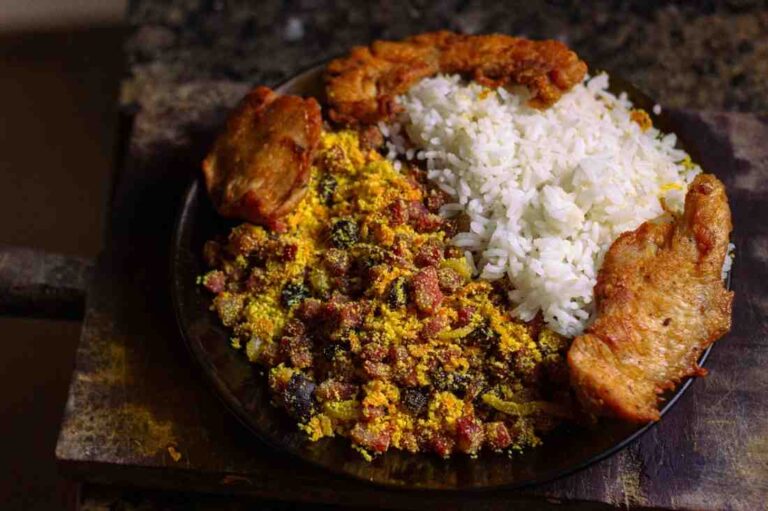10 Traditional Dishes That Tell the Story of Italy
Italy is a country rich in culture, history, and culinary traditions. The diverse regional cuisines reflect the local ingredients, climate, and historical influences, making Italian food a tapestry of flavors and stories. Each dish carries a narrative of its origin, how it has evolved over time, and its significance in Italian society. This article will explore ten traditional dishes that not only tantalize the taste buds but also tell the story of Italy’s vibrant heritage.
1. Pasta alla Carbonara
This Roman dish is a quintessential example of Italian culinary simplicity. Made with eggs, Pecorino Romano cheese, guanciale (cured pork cheek), and black pepper, Pasta alla Carbonara showcases how a few quality ingredients can create a deeply satisfying meal.
The Origins
The origins of Carbonara are somewhat debated, but it is commonly believed to have been created by Italian charcoal workers (carbonai) in the Apennine mountains. The dish became popular in Rome during World War II when American soldiers introduced bacon and eggs to local cuisine.

2. Risotto alla Milanese
Originating from Milan, Risotto alla Milanese is a creamy rice dish flavored with saffron, giving it a distinct yellow hue. The combination of Arborio rice, broth, and butter creates a rich and comforting meal, often served as a primo (first course) in Italian meals.
Cultural Significance
This dish is not just a staple in Lombardy; it embodies the region’s love for luxury and flavor. Saffron, a key ingredient, has a long history of being a prized spice, symbolizing wealth and indulgence in Italian cooking.
3. Neapolitan Pizza
No discussion of Italian cuisine is complete without mentioning Neapolitan pizza. Characterized by its soft, chewy crust, simple tomato sauce, fresh mozzarella, and basil, it is a classic that has gained worldwide fame.
The Art of Pizza Making
Neapolitan pizza is recognized by UNESCO as an intangible cultural heritage. The art of making this pizza involves specific techniques, such as hand-stretching the dough and cooking it in a wood-fired oven, ensuring each pie is a culinary masterpiece.
4. Ossobuco
This Milanese specialty consists of braised veal shank, traditionally served with gremolata and a side of risotto or polenta. The marrow from the bone adds richness to the dish, making it a comforting and hearty meal.
Historical Context
Ossobuco has its roots in the northern regions of Italy, where hearty meals were essential for sustenance. The dish reflects the agricultural practices of the region, utilizing every part of the animal, which is a hallmark of traditional Italian cooking.
5. Tiramisu
Tiramisu, a popular Italian dessert, combines layers of coffee-soaked ladyfingers, mascarpone cheese, and cocoa powder. Its rich, creamy texture and delightful coffee flavor make it a favorite among dessert lovers worldwide.
Modern Invention
This dessert is a more recent addition to Italian cuisine, believed to have originated in the Veneto region in the 1960s. Tiramisu’s rise to fame symbolizes the modern evolution of Italian desserts, blending traditional ingredients with contemporary creativity.
6. Arancini
Arancini are deep-fried rice balls filled with a variety of ingredients, such as ragù, mozzarella, or peas. These delightful snacks originated in Sicily and are a popular street food across Italy.
Cultural Roots
Arancini is a testament to Sicilian cuisine’s resourcefulness, using leftover risotto to create a delicious new dish. The name “arancini” comes from the Italian word for orange, reflecting the shape and color of these tasty treats.
7. Caprese Salad
This simple yet elegant salad features fresh mozzarella, ripe tomatoes, basil, olive oil, and balsamic vinegar. Originating from the island of Capri, Caprese Salad is a celebration of fresh ingredients and seasonal produce.
Symbol of Italian Cuisine
Caprese Salad embodies the essence of Italian cooking—using high-quality, fresh ingredients to create vibrant and flavorful dishes. It represents the Mediterranean diet’s principles, emphasizing health and balance.
8. Polenta
Polenta, a dish made from cornmeal, is a staple in northern Italy. It can be served creamy or allowed to set, then sliced and grilled or fried. Polenta is versatile and can accompany various meats and sauces.
Historical Significance
Historically, polenta was a peasant food, providing sustenance for many families in rural Italy. Its simplicity and adaptability have allowed it to remain a beloved dish through generations.
9. Frittata
A frittata is an Italian egg dish similar to an omelet but thicker and often loaded with vegetables, meats, and cheeses. It can be served hot or cold, making it a popular choice for meals at any time of day.
Regional Variations
The beauty of the frittata lies in its adaptability. Different regions of Italy embrace local ingredients, resulting in a variety of frittata styles, from the vegetable-rich frittata of the south to the meatier versions found in the north.
10. Cacciucco
This Tuscan fish stew is a rich blend of various seafood, tomatoes, garlic, and red wine, often served with toasted bread. Cacciucco reflects the coastal traditions of Tuscany and the bounty of the Mediterranean Sea.
The Story of the Sea
Cacciucco’s origins can be traced back to the fishermen who would use their catch to create a hearty stew. It highlights the importance of seafood in Italian cuisine and the connection between food and the local environment.
FAQs
What is the significance of regional cuisine in Italy?
Regional cuisine in Italy is significant as it reflects the local history, culture, and available ingredients. Each region has its culinary traditions, which contribute to Italy’s rich and diverse food landscape.
Are traditional Italian dishes healthy?
Many traditional Italian dishes emphasize fresh vegetables, lean proteins, and healthy fats, aligning with the Mediterranean diet, which is known for its health benefits. However, moderation is key, as some dishes can be rich and calorie-dense.
How do Italians celebrate food culture?
Food culture in Italy is celebrated through family gatherings, festivals, and regional events. Italians place a strong emphasis on sharing meals with loved ones, and food plays a central role in social interactions and traditions.
Can traditional Italian dishes be made vegan or vegetarian?
Yes, many traditional Italian dishes can be adapted to be vegan or vegetarian by substituting meat with plant-based ingredients while retaining the original flavors. For example, pasta dishes can use vegetables or legumes as protein sources.
Conclusion
The traditional dishes of Italy tell a captivating story of the nation’s history, culture, and regional diversity. From the rich flavors of Pasta alla Carbonara to the sweet indulgence of Tiramisu, each dish offers a glimpse into the heart of Italian culinary tradition. Understanding these dishes fosters a deeper appreciation for the craftsmanship and heritage that define Italian cuisine, inviting everyone to explore and savor the diverse flavors of Italy.







